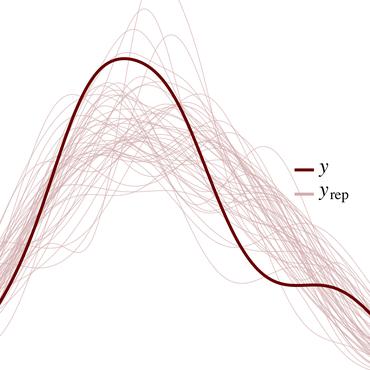Search Results for author: Robert Walecki
Found 7 papers, 0 papers with code
Universal Marginaliser for Deep Amortised Inference for Probabilistic Programs
no code implementations • 16 Oct 2019 • Robert Walecki, Kostis Gourgoulias, Adam Baker, Chris Hart, Chris Lucas, Max Zwiessele, Albert Buchard, Maria Lomeli, Yura Perov, Saurabh Johri
Probabilistic programming languages (PPLs) are powerful modelling tools which allow to formalise our knowledge about the world and reason about its inherent uncertainty.
SEWA DB: A Rich Database for Audio-Visual Emotion and Sentiment Research in the Wild
no code implementations • 9 Jan 2019 • Jean Kossaifi, Robert Walecki, Yannis Panagakis, Jie Shen, Maximilian Schmitt, Fabien Ringeval, Jing Han, Vedhas Pandit, Antoine Toisoul, Bjorn Schuller, Kam Star, Elnar Hajiyev, Maja Pantic
Natural human-computer interaction and audio-visual human behaviour sensing systems, which would achieve robust performance in-the-wild are more needed than ever as digital devices are increasingly becoming an indispensable part of our life.
Universal Marginalizer for Amortised Inference and Embedding of Generative Models
no code implementations • 12 Nov 2018 • Robert Walecki, Albert Buchard, Kostis Gourgoulias, Chris Hart, Maria Lomeli, A. K. W. Navarro, Max Zwiessele, Yura Perov, Saurabh Johri
Probabilistic graphical models are powerful tools which allow us to formalise our knowledge about the world and reason about its inherent uncertainty.
Deep Structured Learning for Facial Action Unit Intensity Estimation
no code implementations • CVPR 2017 • Robert Walecki, Ognjen, Rudovic, Vladimir Pavlovic, Björn Schuller, Maja Pantic
The goal of this paper is to model these structures and estimate complex feature representations simultaneously by combining conditional random field (CRF) encoded AU dependencies with deep learning.
DeepCoder: Semi-parametric Variational Autoencoders for Automatic Facial Action Coding
no code implementations • ICCV 2017 • Dieu Linh Tran, Robert Walecki, Ognjen Rudovic, Stefanos Eleftheriadis, Bjørn Schuller, Maja Pantic
Potentially, this makes VAEs a suitable approach for learning facial features for AU intensity estimation.
Copula Ordinal Regression for Joint Estimation of Facial Action Unit Intensity
no code implementations • CVPR 2016 • Robert Walecki, Ognjen Rudovic, Vladimir Pavlovic, Maja Pantic
Joint modeling of the intensity of facial action units (AUs) from face images is challenging due to the large number of AUs (30+) and their intensity levels (6).
Variable-state Latent Conditional Random Fields for Facial Expression Recognition and Action Unit Detection
no code implementations • 13 Oct 2015 • Robert Walecki, Ognjen Rudovic, Vladimir Pavlovic, Maja Pantic
For instance, in the case of AU detection, the goal is to discriminate between the segments of an image sequence in which this AU is active or inactive.



